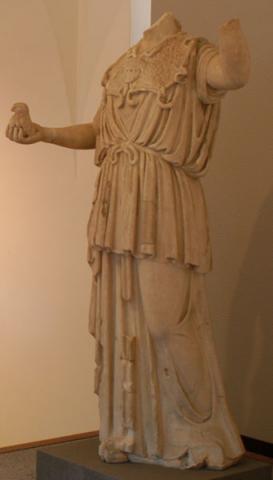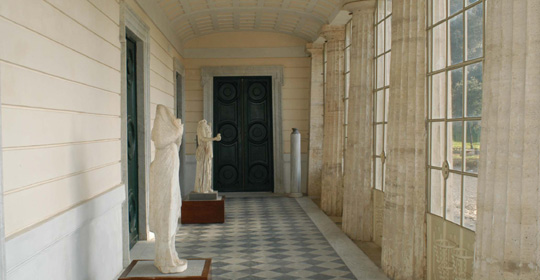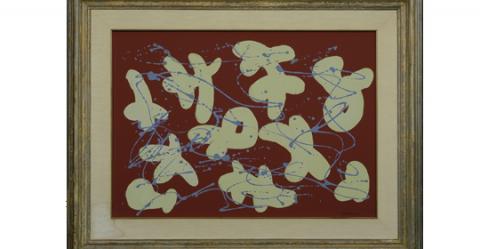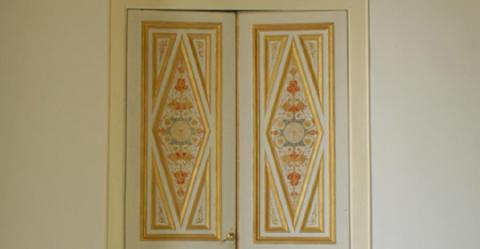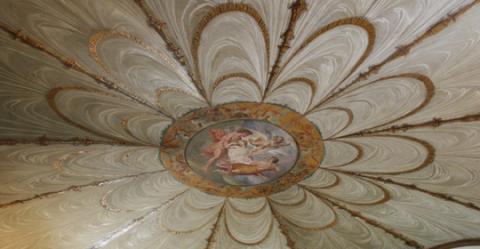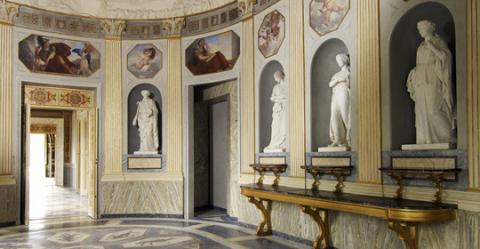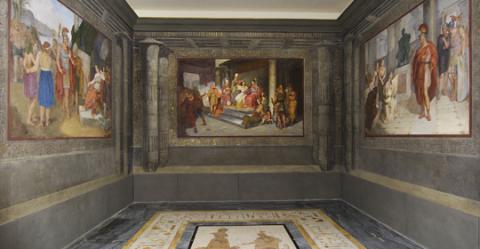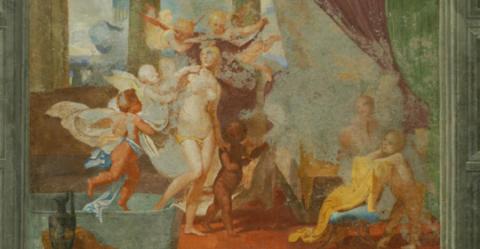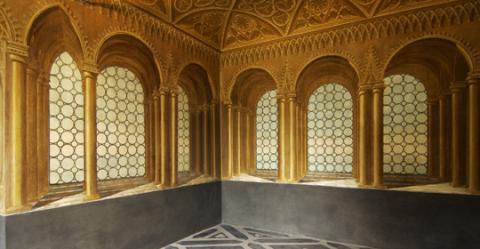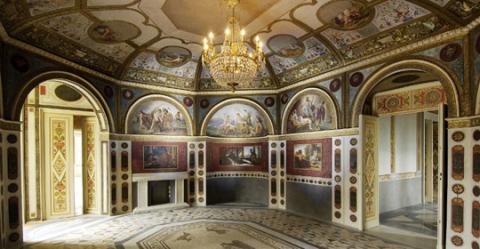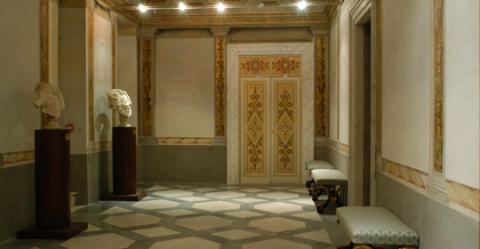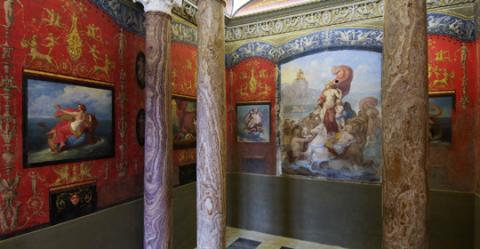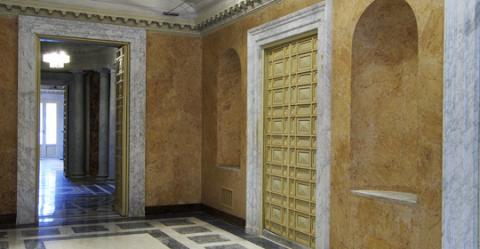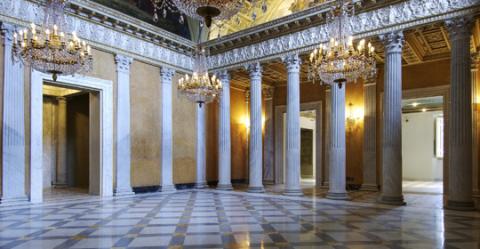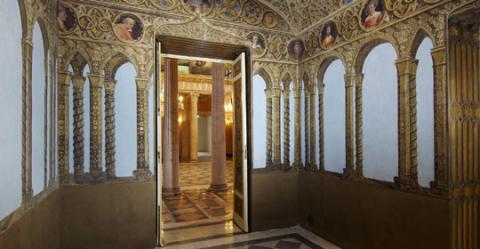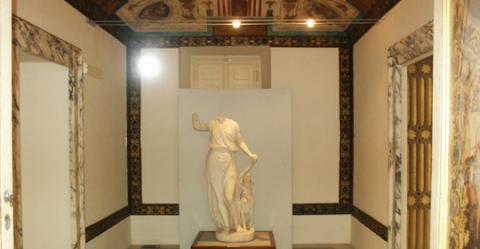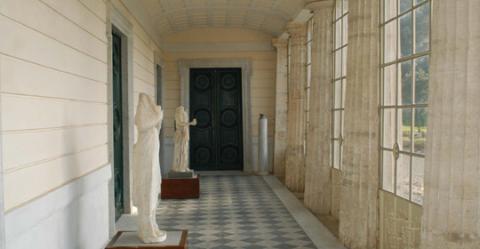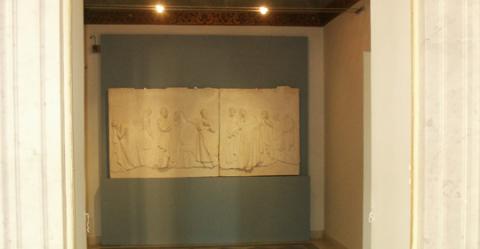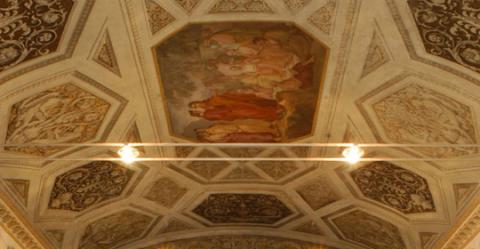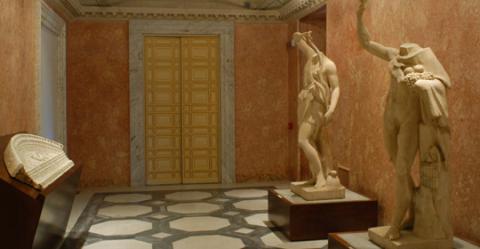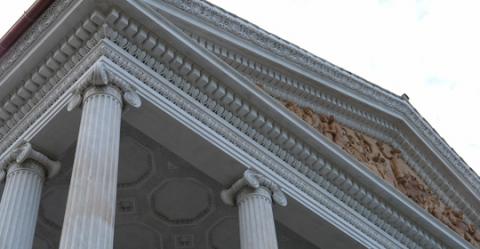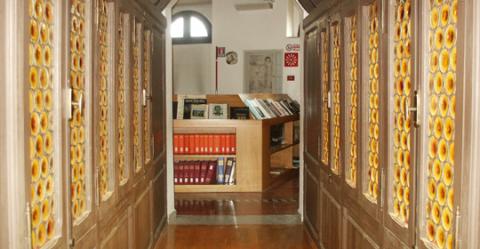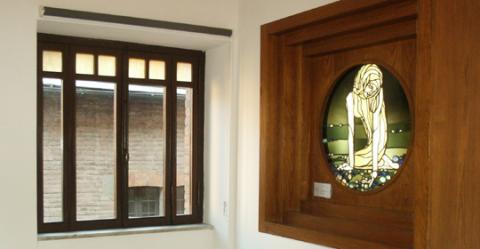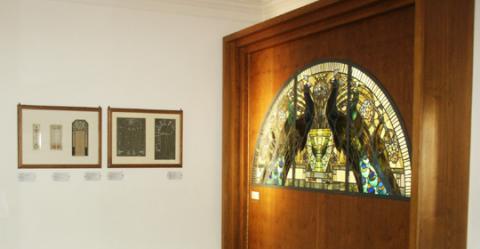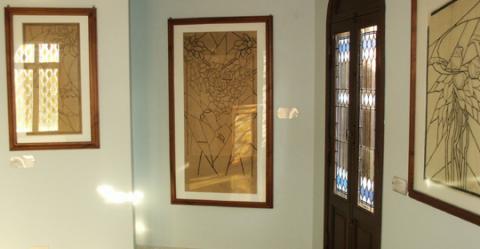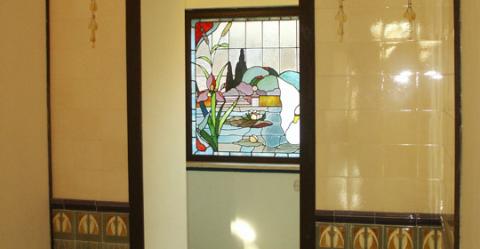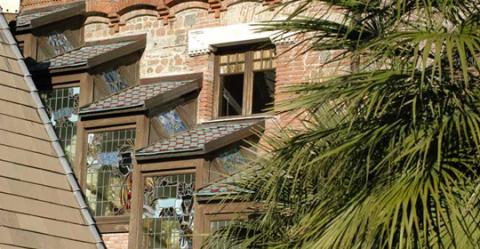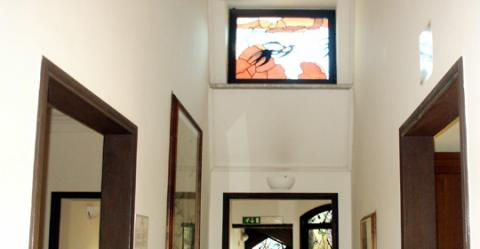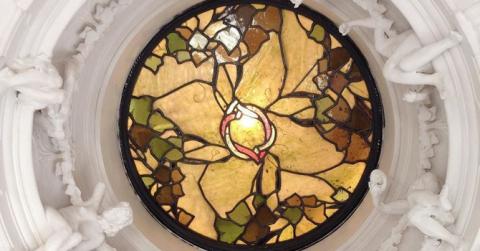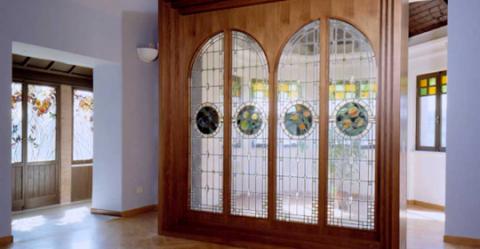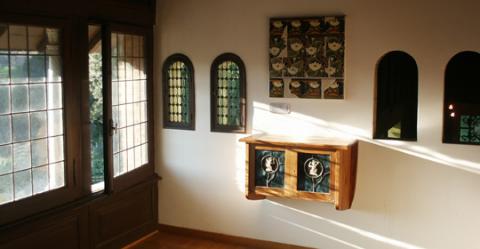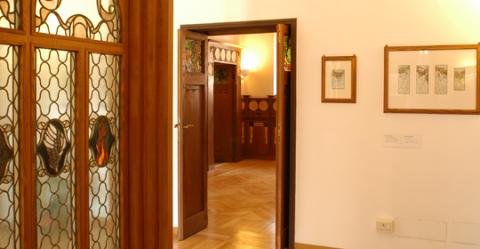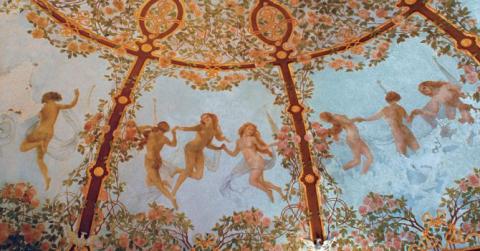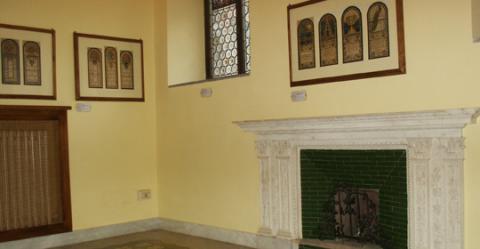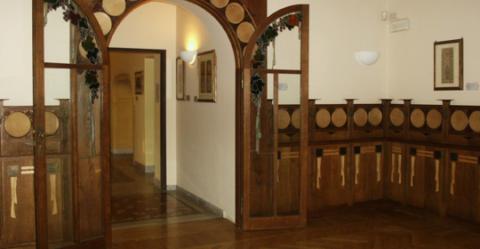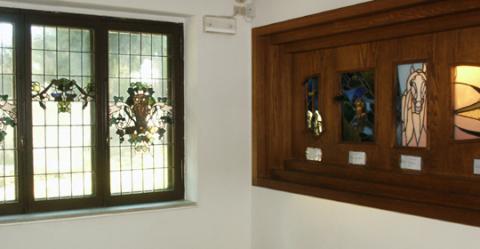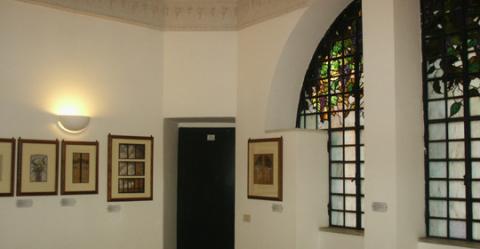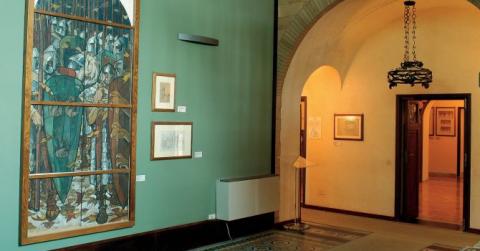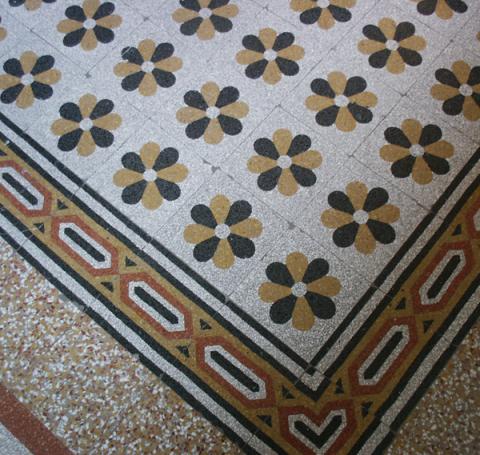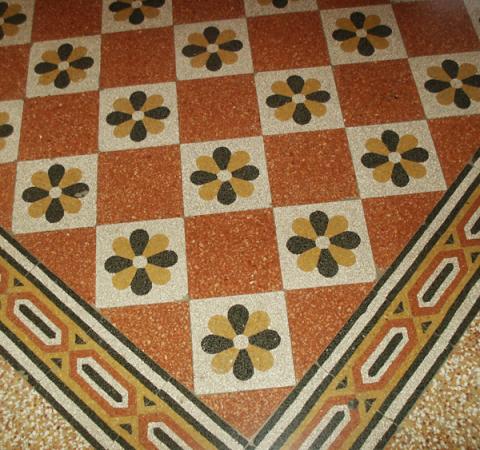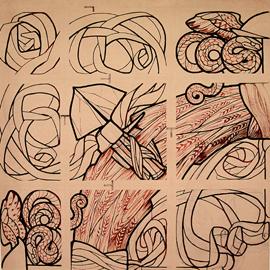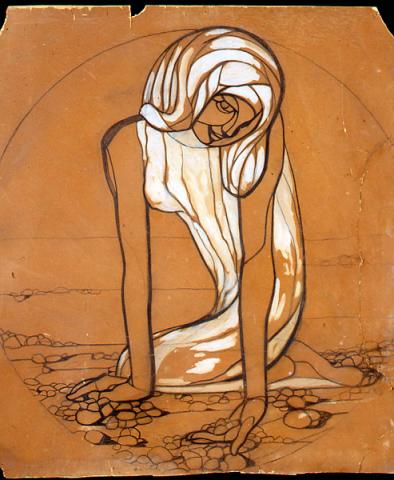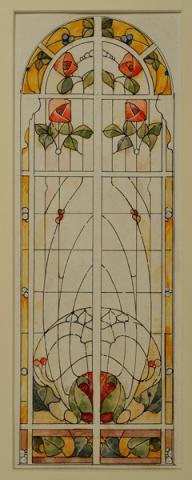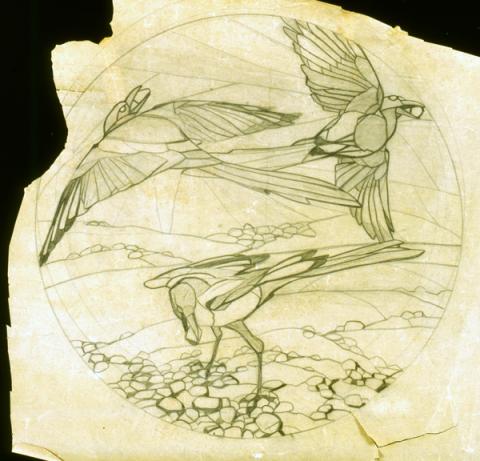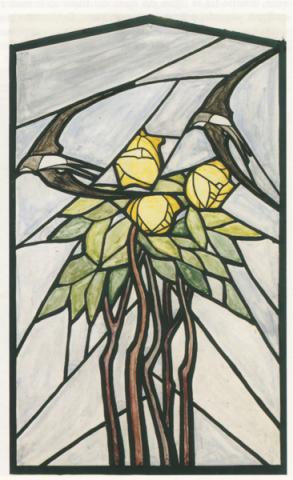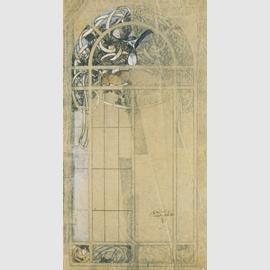Athena Parthènos
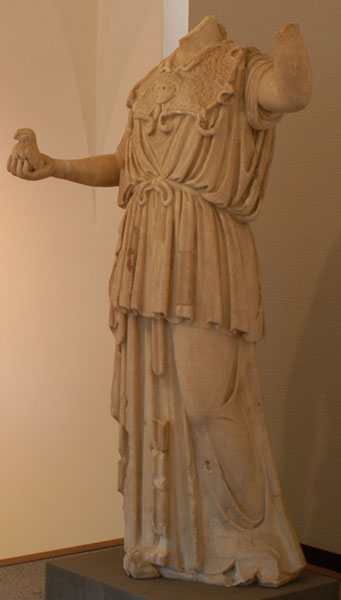
The statue comes from the Cavaceppi workshop. It was bought by Giovanni Torlonia senior in 1800 but we do not know when it became a feature of the Villa’s decorations. One hypothesis is that it was placed in the Diruto Temple dedicated to Minerva, which was demolished in the early twentieth century.
This is a replica of the statue of Athena Parthènos and was probably made between the late Trajan era and the mid-second century AD. The original model was the famous chrysoelephantine colossal statue made by Phidias (438 BC), a cult statue in the Parthenon and a symbol of the greatness of Athens during the time of Pericles.
Bartolomeo Cavaceppi added a head (removed in 1983), the left hand with the spear, and the left foot to the original body.
The goddess wears a peplum tied at the waist by a belt. The ends of the belt are formed by symmetrical volutes that terminate in snakes’ heads.
The chest and shoulders of the figure are covered by the shield decorated with gorgoneion and edged with eight rolled snakes’ tails.
Masterpieces of the hall
The hall
The portico links the two wings of the Palace and dates from the first design by Giuseppe Valadier. It is lined by Tuscan columns made of travertine and is closed off by wide glass doors.
The two rooms on either side of the Portico have no decoration and are used now as the Sale Video and Documentazione.






























